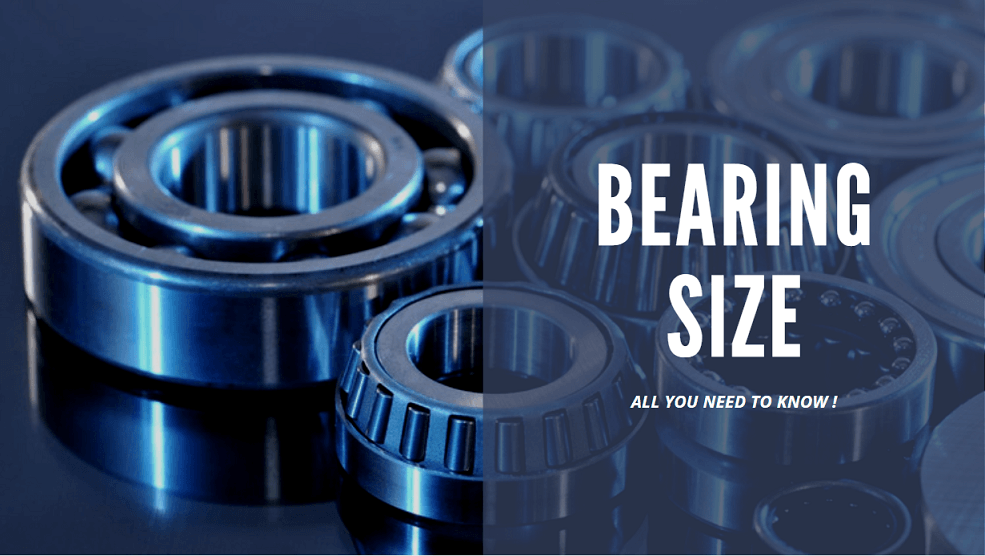How To Measure The Bearing Size?

The bearing of a wheel is known as an essential part of a wheel that helps give a direct connection to the axle to function. It has some steel balls or rollers joined together using a metal ring, which allows its main function: that the wheel rotates easily with minimal friction.
These components are essential for the safety of large loads in, for example, boat trailers, which are used daily around the world. It is always important that the bearings are in good condition for acceleration, braking, and cornering that occur with these trailers, avoiding accidents that may arise due to their failures.
Measuring Bearing Size
For connoisseurs, it is well known that boat trailer bearings are strong and durable, as they tend to be in contact with seawater. However, they can be damaged when proper care is not given, which is not usually known to workers in such spaces and with heavily used trailers.
1. Visual Determination
It consists of cleaning the bearing to remove grease, thus making it possible to see the reference number that, in most cases, is engraved on the flat section of the metalized surface. You can almost always get the L44649 and L44643 options, which help you find the right size quickly and go shopping for the standard ones.
2. Determination By Measurement
In this case, the shaft must also be cleaned to remove the grease on the surface, then determine where the internal bearing is on the spindle, the smooth surface being close to the middle of the trailer. Once this is done, the width of the spindle is measured with a digital caliper, then closing the clamp arms around the spindle.
How To Measure The Bearing Size For A Boat Trailer?
The ways to measure above are considered for all types of bearings, but certain specific characteristics must be considered to avoid serious long-term damage for boat trailers. If the correct action is not taken, the trailer may never work again until the correct one is changed.
Therefore, it is important to take into account the following steps when measuring the bearing of a boat trailer:
1. Basic Measurement
This is using a caliper or micrometer, being possible to do it in the dimensions of the outside diameter, inside diameter, and width. These measurements can give using the revolutions, loads, and the types of forces to which the boat trailer will be subjected.
The part numbers of the bearings make it possible to know the types, sizes, and uses that they can maintain, being stamped or printed on it. However, this information cannot obtain due to wear, so the basic measurement should be applied without visual determination.
2. Calibration Of The Micrometer
If the dimension measurement process is used, it is important to calibrate the micrometer, which has to be opened, and the gage block in which the measuring tips are located. Then, the thimble is moved so that it closes, allowing it to adjust until the tips are in line with the bearing.
The measures must read well to avoid margins of error and so that everything is more exact.
3. Measurement Of Internal Diameter
After the external measurement, the micrometer is opened according to an approximate size of the internal opening, then adjusted until the sides of the measurement on each side contact the internal diameter.
4. Clean Up Dirt Build-up
After cleaning, the internal and external measures have to be rectified, in case the cleaning has not been done before, to avoid failures when changing the bearing. In this way, a suitable installation can make based on the needs of the boat trailer that is being used.
Things You Need To Keep In Mind.
Some elements must be considered when measuring bearings, such as the following:
Bearing Types
Conclusion
Once all the proper measurements are considered at Bushing MFG and it is possible to change a bearing for a boat trailer without too much hassle. Even without the need to measure, you can go to the bearing numbers engraved on its parts, as they are standard measurements recognized throughout the world.
However, if you want greater precision, as was well said, you can take the measurements with the micrometer, taking into account its correct calibration. All this happens with any bearing, so no matter the boat trailer's capacity, it is always possible to apply these techniques without problems.
Thus, finally, if recurring failures are found, the correct changes can be made whenever it is considered necessary, easily avoiding failures that may be occurring due to the use of any bearing that is not adequate.
